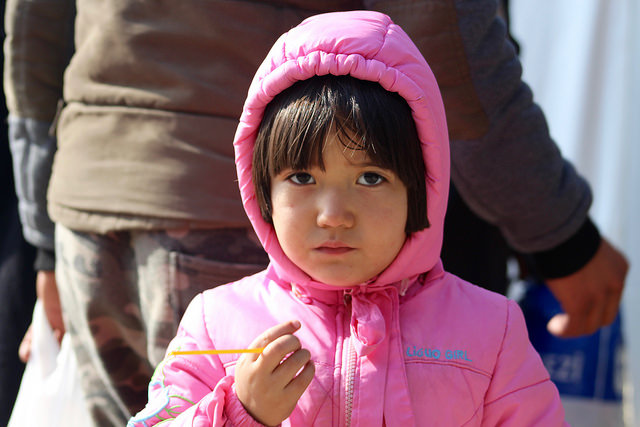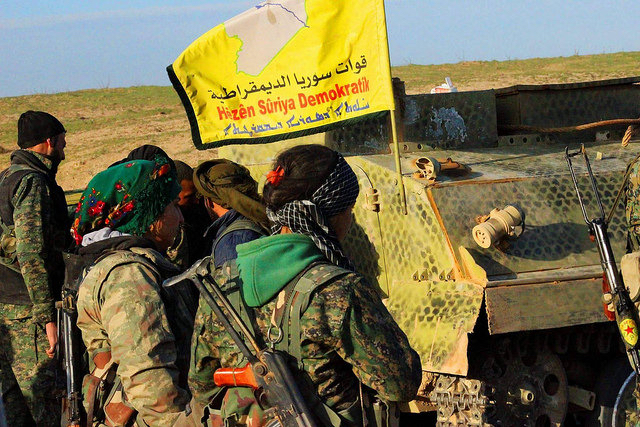In the first part of our series ‘Europe’s Outsourced Refugees,’ we report from Belgrade on how illegal pushbacks of asylum seekers along the Balkan route are leaving refugees invisible and unprotected.
BELGRADE – More than 1,000 miles from home, Wael al-Zainab encountered a fortified fence amid the rich foliage, backed up by some of the 47,000-strong force patrolling the Hungarian border – a far cry from the warm reception he had hoped for. The three rows of coiled razor wire confronting him bore an unnerving resemblance to the barriers that had appeared in al-Zainab’s home city of Idlib during the war in Syria.
As the 22-year-old, who had already been on the move for several months,prepared to cross into Hungary on a crisp day last April, the hairs on his forearms stood up as if on high alert.
Most migrants use wire cutters to enter the no-man’s land between Hungary and Serbia, hoping to escape the watchful gaze of the border police. But al-Zainab entered Hungary openly through the Horgoš crossing and handed himself to the police in the hope that they would allow him to apply for asylum. He and a few more asylum seekers were immediately transported to a nearby detention center.
After he spent 14 days in containers along the border and had two 20-minute interviews with Hungarian immigration officials – purportedly part of an accelerated asylum assessment – officials gave al-Zainab a handwritten note telling him his asylum claim had been rejected, without providing any explanation.
Surrounded by intimidating armed soldiers, al-Zainab and the other asylum seekers he arrived with were escorted out of the country, with the guards literally shutting the gates behind them. The Hungarian authorities did not inform the Serbian police of al-Zainab’s return and simply left him and his group in an uninhabited part of Horgoš. For two days they walked back to Belgrade, the Serbian capital.
The expulsion of al-Zainab and the other asylum seekers is illegal, says Nikola Kovacevic, lawyer at the Belgrade Centre for Human Rights (BCHR).
“Serbia is not a safe country because, as stated in a 2012 [internal] UNHCRreport, it still does not have sufficient and fair asylum procedures in place. It is very hard to obtain international protection here,” Kovacevic explained. “The entire accelerated procedure [by Hungary] was based on the flawed assumption that people who are sent back to Serbia will receive the help they need.”
As their country enters a seventh year of conflict, Syrians are still considered prima facie refugees who should be allowed to apply for asylum in any of the Balkan countries that are members of the European Union. But instead of ascertaining the details of al-Zainab’s claims, Hungarian officials told him after his two short interviews that his application had been denied; he could not appeal or seek a lawyer’s help.
“There was no possibility to decide the merit of Wael’s case, and examine if he is facing persecution in his country of origin,” Kovacevic said. “After the second interview, they [the al-Zainab group] were ‘informally expelled’ to Serbia, with no coordination with Serbian border authorities, which is illegal under international humanitarian law and European human rights law.”
Increasing Pushbacks
Al-Zainab’s experience is far from unique, given the evidence of several testimonials that the BCHR has collected over the past year. This appears to be the result of a deliberate strategy enforced by border police in Hungary to deter new entries of asylum seekers, according to rights group Amnesty International.
Hungary has gained notoriety for its forceful expulsions of asylum seekers and anti-migration laws that have caused a ripple effect in the region.
In autumn 2015, the country closed its borders with Serbia and Croatia. Shortly afterwards, Macedonia started erecting a fence along its border with Greece, effectively cutting off asylum seekers in Greece from access to western and northern Europe.
The unilateral decisions by E.U. member states in the Balkans, coupled with the closure of Macedonia’s border with Greece and the lack of coordination among the different neighbors, has made Serbia – a non-E.U. country – an involuntary holding center for refugees trying to reach Europe.
In recent months, the number of “pushbacks” – a term used for informal expulsions of asylum seekers without due process – has been on the rise along the western Balkan route, often coupled with violence and beatings.
Hungary passed even tougher laws this month, formalizing the process of detaining asylum seekers in so-called “transit zones” and allowing border police to expel those who do not have a legitimate asylum claim in the eyes of state officials.
Al-Zainab left his ancestral home in Syria because he did not want to fight in a war that he did not support. “I do not know how to use a gun and I do not want to learn how to,” he says.
Sensing the threat of death, whether as the result of a stray bullet or while serving in the government forces, he left Syria – which, he says, “has no safe space, especially for young men.”
He finds it difficult to explain the realities of life in his home country to often unsympathetic immigration officials. “Words cannot do justice,” he explains.
An ambitious student pursuing a degree in agricultural engineering, he was forced to leave Syria before completing his studies, because of the military draft. Al-Zainab is determined to press on and seek asylum in a country that allows him to pursue an advanced degree and a career.
But by the time he reached Hungary, the borders had closed and clampdowns on asylum seekers soared.
After being pushed back by the Hungarian authorities, al-Zainab and a few other asylum seekers wandered around different public buildings in Belgrade, and made several visits to the police station to start their asylum claims. They were turned away every time.
Meanwhile, they slept rough on the streets, with little information about their rights, or any way forward.
“If you consider Serbia as a safe country you need to obtain guarantees that people are allowed to apply for asylum,” Kovacevic said.
The European Court of Human Rights recently ruled that Hungary’s return of two asylum seekers from Bangladesh to Serbia in 2015 was illegal. TheBCHR hopes this ruling and similar upcoming cases will force Hungary to end pushbacks of people like al-Zainab.
Pushed Toward ‘Invisibility’
Human rights advocates say the E.U. has outsourced its migration problem by confining asylum seekers to a very small part of its territory, as with Greece, and to places outside its territory – like Turkey. These unilateral measures and agreements like the E.U.-Turkey deal are murky under international legal norms and have unclear results, according to several rights groups.
Meanwhile Serbia, which is seeking E.U. membership, has become a staging post for people pushed back by European policies. There are nearly 8,000 asylum seekers in Serbia, according to the U.N, many of them stranded because of border closures. More than 1,000 have endured the harsh winter months sleeping in abandoned warehouses.
Many of the asylum seekers in Serbia choose not to stay in the official camps because they fear that they will become closed detention centers from where they will be pushed back or, worse, sent back to their home countries.
“We documented hundreds of cases where people claimed that during the night, on the way to the camps like Preševo [in Serbia], they were gathered and put on a bus and returned to Macedonia,” Kovacevic said.
The UNHCR reported that more than 3,400 people were pushed back from Hungary to Serbia alone over the past few months. The ripple effect of returns from one country to another along the western Balkan route could result in the asylum seekers in Serbia being sent to Greece, and eventually deported to Turkey, due to the E.U.-Turkey deal enacted one year ago.
“Hungary considers Serbia as a safe country. Serbia considers Macedonia as a safe country. Macedonia adopted a set of laws in April last year that envisage all E.U. countries and NATO countries, such as Greece, as safe. So in the end you have the possibility of refugees being turned back to Greece and finally Turkey under the deal,” Kovacevic said.
Citing the increased vulnerability of refugees stranded in Greece, especially since the E.U. deal with Turkey, organizations such as Oxfam, the International Rescue Committee and the Norwegian Refugee Council have challenged the notion that Greece is a safe country of reception.
Ultimately, the countries along the Balkan route are not meeting the standards prescribed by the 1951 Refugee Convention or the European Convention on Human Rights, according to the U.N.
Kovacevic expects the situation in Serbia to get worse for asylum seekers. The lack of proper registration and data, especially about unaccompanied minors and lone women, has made it nearly impossible to gain an overview of the scale of the problems they face.
“From the stories of our clients we can see that besides smugglers there are instances of human trafficking, extortion, physical and mental abuse. Without a joint solution, these people are forced to turn towards organized criminal groups that are operating from Turkey, to Hungary, to Austria,” he said.
This article originally appeared on Refugees Deeply, and you can find the original here. For important news about displacement and forced migration, you can sign up to the Refugees Deeply email list.
Photograph courtesy of Trocaire. Published under a Creative Commons license.





